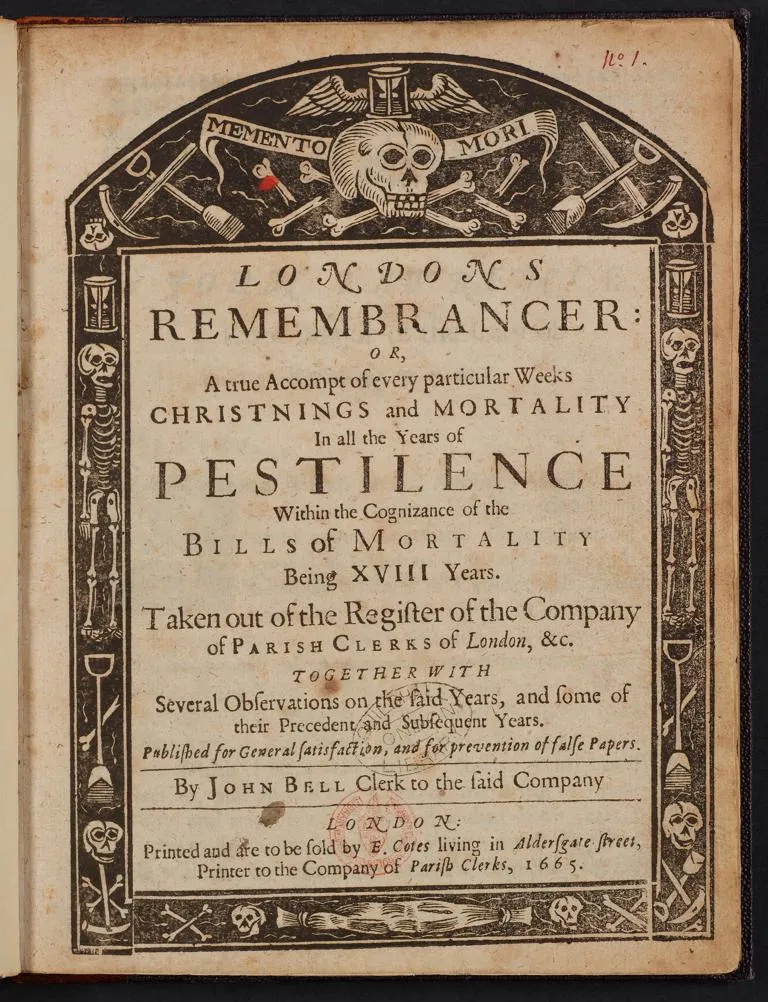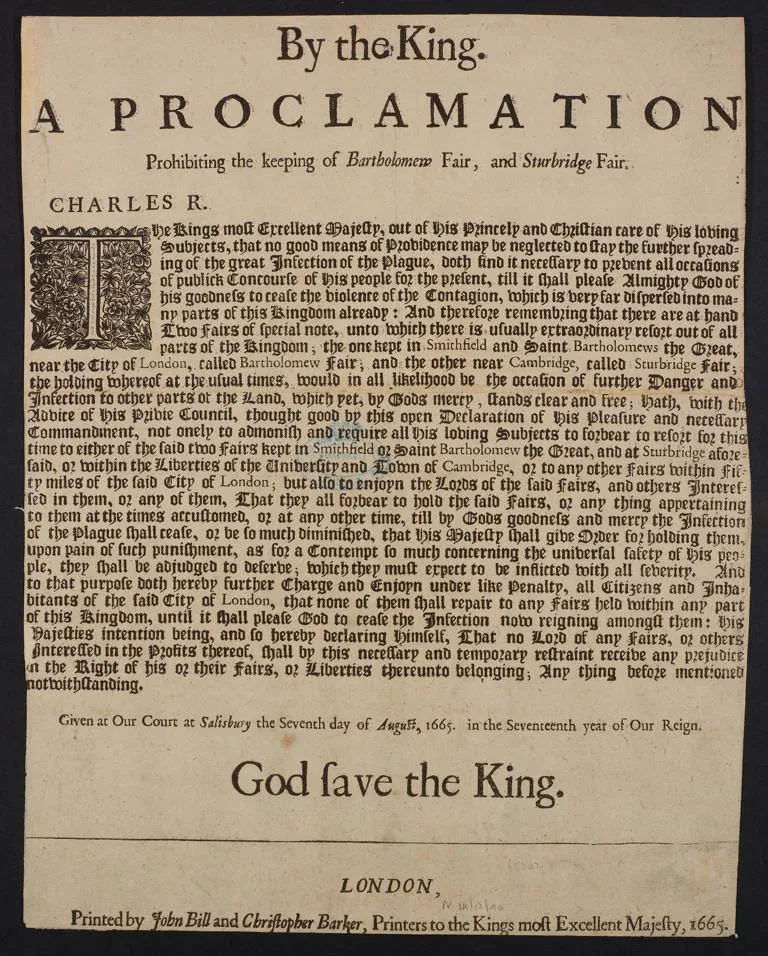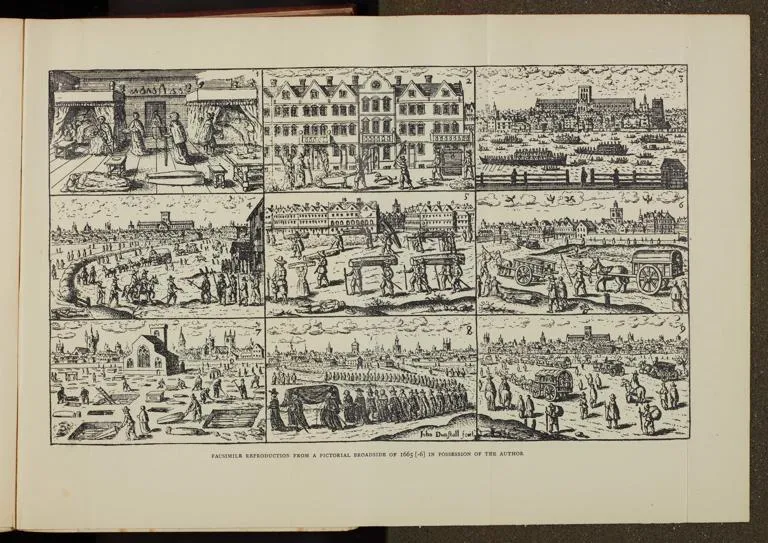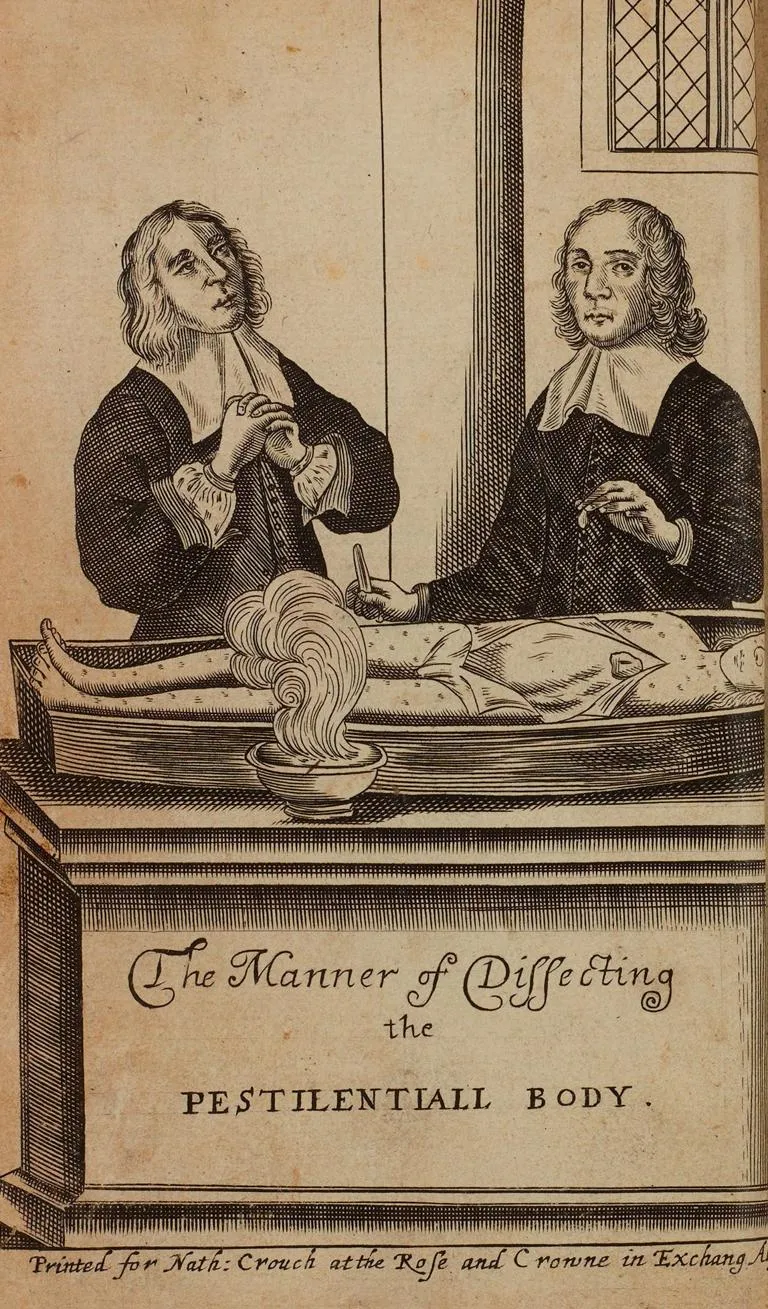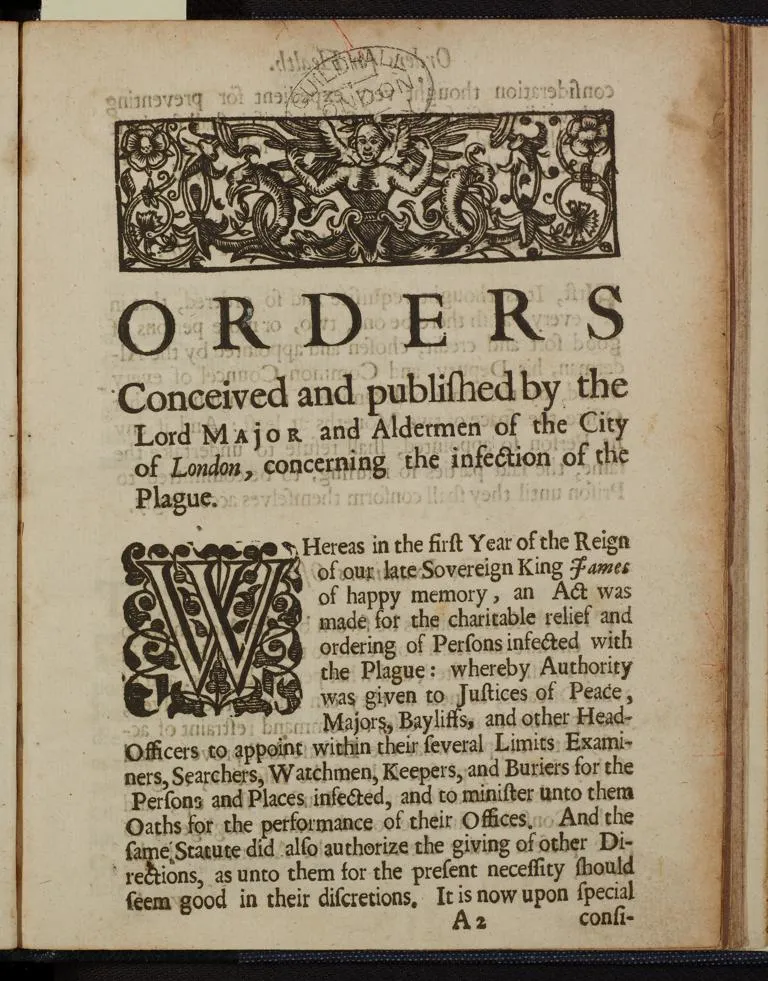Great Plague online exhibition
London's Dreadful Visitation: The Great Plague, 1665
The Great Plague was a devastating event in the City of London, wiping out almost 100,000 people. Whether young or old, man or woman, saint or sinner, it killed mercilessly and changed London forever.
From books and broadsides to manuscript records of the numbers of the dead, a mass of information lies hidden at Guildhall Library, waiting to reveal more secrets about this dramatic period of our history. Using a wide variety of resources at Guildhall Library, this exhibition explores what you can learn about London's Great Plague of 1665. Any material mentioned in this exhibition is available to consult at the library.
The original Guildhall Library exhibition consisted of eight pull-up banners and is available to hire for display. Email Guildhall Library Events, or 020 7332 1868 for further information.
The City of London had experienced two major plague epidemics in 1603 and 1625 but, in 1665, more people died than ever before.
The population had increased from 200,000 in 1600 to over 350,000 in 1650, leading to overcrowding and encouraging the spread of the disease. From the first plague death recorded in May 1665, the Bills of Mortality allow us to trace the disease's impact. One of the worst affected areas in the City was St Giles Cripplegate where deaths peaked in September, before rapidly declining.
With so many people dying or fleeing, the economic life of London was badly affected. The minister Thomas Vincent witnessed "a deep silence almost in every place, especially within the walls; no ratling Coaches, no prancing Horses, no calling in Customers, nor offering Wares".
The plague killed quickly and painfully. Dr Nathaniel Hodges provides a description of the symptoms of plague in his text Loimologia, which included "unquenchable Thirst within, Dryness, Blackness of the Tongue." Other symptoms included vomiting, delirium and buboes (swelling of the lymph nodes).
The Parish Clerks' Bills of Mortality are the closest thing we have to accurate statistics about the disease. Recording causes of death and numbers of burials parish by parish, week by week, they help us understand the spread of plague across the City. They also acted as an early warning system for outbreaks of plague in 1665. The King and the Lord Mayor would see them before the public, so they could take swift action to shut up any infected houses. Guildhall Library holds the fullest set of Bills of Mortality in the world, dating from 1532-1858.
However, the Bills may not be completely reliable. The 'searchers' (people employed to determine causes of death) were usually poor old women, forced by parish authorities to do the job in exchange for food and clothing. With no medical training, their diagnoses were not necessarily accurate and were also susceptible to bribes – houses affected by plague, and their remaining healthy inhabitants, would be shut up for 40 days, so people would want a different cause of death listed. Furthermore, some deaths are recorded under symptoms of the plague, such as 'Vomiting' and 'Feaver', so there may have been even more plague deaths, registered as something else.
Some historians think the 68,596 recorded plague deaths were far closer to 100,000.
With little idea of what caused the plague, a wide variety of remedies became available, including superstitious ones – Samuel Pepys carried a hare's foot. Dr Nathaniel Hodges, one of few physicians who stayed in London, thought they did more harm than good – in Loimologia he wrote: "many confiding too much in them, neglected other more necessary Means of Preservation."
Most physicians, apothecaries and surgeons fled. Quack doctors with no medical training therefore promoted their own, often expensive, remedies. The medical establishment warned people against these and John Gadbury, in A Short Discourse Shewing the Causes of Plagues in General (1665), accused them of "squirting out their filth and shame against the Learned Colledge of Physicians."
Few remedies can have worked once plague was upon you, so prevention was actively promoted. Many carried preservatives to avoid breathing in the infection. Thomas Vincent, an English minister who wrote his account of the plague in God's Terrible Voice in the City, (1667), said "Rue and Wormwood is taken into the hand; Myrrhe and Zedoary into the mouth; and without some antidote few stir abroad in the morning."
Guildhall Library holds eye-witness accounts of the plague, including entries from Pepys' and Evelyn's diaries. These describe awful sights which must have been commonplace. The clergyman Thomas Vincent (God’s Terrible Voice in the City), saw “a woman…weeping by the door where I lived…with a little Coffin under her arm…; I did judge that it was the mother of the childe, and that all the family besides was dead, and she was forced to coffin up and bury with her own hands this her last dead childe.” Samuel Pepys, who stayed in London, seemed to grow desensitised to these sorts of horrors. Witnessing a corpse he said, "Lord, to see what custom is, that I am come almost to think nothing of it."
We can also read the fears and emotions felt by these writers. John Evelyn, a gentleman in charge of sick and wounded sailors, expressed his terror when he "was surpriz'd with a fainting fit: which much a’larm’d the family, as well it might, I coming so latterly from infected places."
Pepys and Evelyn kept their own record of the numbers dying from plague in their diary entries, with their thoughts on the disease's spread. Pepys' entry for 14 September said “the duke showed us the number of the plague this week, brought in the last night from the Lord Mayor…of them, the plague 7,165 – which is more in the whole, by above 50, than the biggest Bill yet – which is very grievous to us all."
Many different explanations for the plague appeared. Clergyman Thomas Vincent claims the plague was a punishment from God for all people: "It infecteth not only those which are weak, and infirm in body, and full of ill humors, but also those which are young, strong, healthful, and of the best temperature."
Other theories emerged. Some thought astrology and the movement of planets played a part – the appearance of a comet at the end of 1664 was thought to have foretold the plague. This incident was mentioned in Daniel Defoe's fictional account A Journal of the Plague Year. Some other explanations were miasma (bad air); an infected package from Holland; and changes in the weather.
Nevertheless, people agreed that these other causes were just the methods used by God to send the pestilence. John Gadbury, in his A Short Discourse Shewing the Cases of Plagues in General (1665) said "When I speak of the Causes of the Plague, you are to understand that I tacitly acknowledge, God the chief and supreme Cause of all things!"
King Charles II fled London in July 1665, but the Lord Mayor and many other City officials remained and issued Orders conceived and published by the Lord Mayor and Aldermen of the City of London, concerning the infection of the plague, based on versions from previous plagues.
This text contains instructions for preventing the infection. Movement was strictly controlled: anyone leaving the City had to have a certificate of health, and houses affected by plague were shut up. Some of the sick did go to pesthouses, a type of hospital for those with infectious diseases, but there were very few of these in London.
Despite some grumblings over the official City response, Daniel Defoe said that the orders put in place meant "that London may be a pattern to all the cities in the world for the good government and the excellent order that was everywhere kept" (in his Journal of the Plague Year).
The list of orders given by the Lord Mayor focused on preventing the spread of the disease, such as what should be done regarding beggars, plays and feasting. Other orders included burying those who died at night; no infected items to be taken out of houses; and the streets to be kept clean.
